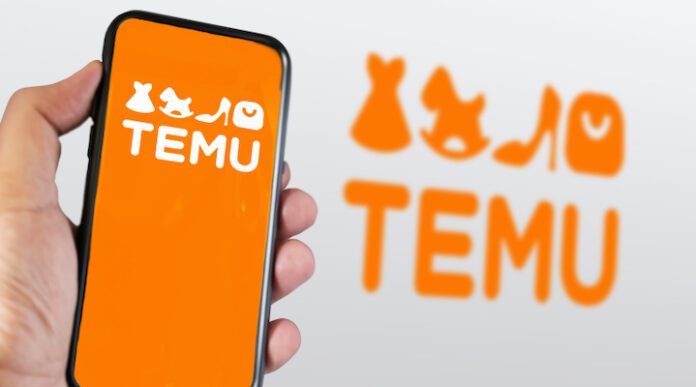Introduction
In the ever-evolving realm of online commerce, a relatively new player has emerged to challenge the status quo. Temu, a Chinese shopping site, burst onto the scene in September 2022, swiftly climbing the app store charts and capturing the attention of millions. This article explores the meteoric rise of Temu, its unique approach to online retail, and the implications it holds for the broader landscape of e-commerce.
1. The Temu Experience: A Carnival of Bargains
Upon entering the virtual realm of Temu, users are greeted with a carnival-like atmosphere, replete with pop-ups, spin wheels, and tantalizing offers. The company strategically employs promotional gimmicks to entice users, a calculated move aimed at establishing a loyal customer base. Temu’s marketplace is a virtual spectacle, showcasing an eclectic array of dirt-cheap items, ranging from wireless headphones to quirky gadgets, creating a shopping experience akin to a Dollar General merged with Etsy and a dash of Spencer’s.
2. From Obscurity to Prominence: Temu’s Journey
A mere year ago, Temu did not exist. However, a vigorous marketing campaign, including high-profile Super Bowl ads, catapulted the platform into the mainstream. By May of the following year, Temu boasted over 100 million active users in the United States alone, signaling its rapid ascent in the competitive landscape of online shopping.
3. Temu’s Target Audience: Navigating the Allure of Cheap Stuff
One of the perplexing aspects of Temu is its diverse array of products, ranging from absurdly cheap everyday items to bizarre, offbeat novelties. Wendy Woloson, a consumer culture historian, emphasizes the allure of cheap goods and our inherent desire for novelty, positing that Temu successfully taps into this consumer mindset. Despite its tagline urging users to “shop like a billionaire,” the core customer demographic for Temu surprisingly comprises budget-conscious individuals, with 40 percent of sales coming from households earning less than $40,000 annually.
4. The Price Conundrum: Temu’s Strategic Pricing Tactics
Temu’s pricing strategy, while showcasing bottom-barrel prices on its front page, reveals a nuanced approach. Rui Ma, a tech analyst, notes that Temu employs deep discounts strategically to attract traffic, supplementing losses with slightly higher prices on other items. The company, a third-party marketplace, sets itself apart from Amazon by relying entirely on third-party sellers, offering them an accessible platform with a focus on slashing prices aggressively.
5. The PDD Holdings Factor: Unraveling Temu’s Success
Temu’s meteoric growth is intricately tied to its parent company, PDD Holdings, a juggernaut in Chinese e-commerce. With a monthly gross merchandise volume (GMV) reaching $1 billion within a year, Temu’s success is underpinned by PDD’s substantial financial backing. However, Temu operates on thin profit margins, reportedly losing money on each order, relying on PDD’s financial might to subsidize its business costs.
6. Ethical Concerns and Supply Chain Transparency
6. Ethical Concerns and Supply Chain Transparency
Temu’s ascent to prominence in the online shopping sphere has not been without its fair share of ethical concerns, particularly surrounding the transparency of its supply chain practices. Allegations have surfaced, suggesting a potential link between Temu’s supply chain and forced Uyghur labor—an accusation that the company vehemently denies. This section delves deeper into the ethical considerations surrounding Temu’s operations and the broader implications for its consumers and stakeholders.
6.1 Forced Uyghur Labor: Allegations and Denials
In June, the U.S. Select Committee on the Chinese Communist Party released an interim report raising alarm bells about an “extremely high risk” of Temu’s supply chain involving forced Uyghur labor—a practice explicitly prohibited in the U.S. under the Uyghur Forced Labor Prevention Act. While Temu categorically denies these allegations, asserting a commitment to following rules and regulations, questions persist about the rigor of the company’s supply chain audits and the efficacy of its compliance mechanisms.
6.2 Third-Party Sellers and Ethical Accountability
A crucial aspect of Temu’s business model is its reliance on third-party sellers who populate its marketplace with an extensive array of products. However, this decentralized structure raises ethical questions about the accountability of these sellers and the extent to which Temu ensures adherence to ethical sourcing practices. Critics argue that the pursuit of aggressive pricing could inadvertently foster an environment where sellers compromise on labor standards to meet Temu’s demands.
6.3 Supply Chain Transparency: A Closer Look
Transparency is a cornerstone of ethical supply chain management, and Temu finds itself under scrutiny for the opacity surrounding its sourcing practices. While the company asserts that its standards align with major U.S. e-commerce platforms such as Amazon, eBay, and Etsy, critics question the depth of Temu’s commitment to transparency. Specific queries about audits, prohibition of sellers from regions implicated in forced labor controversies (such as Xinjiang), and measures to ensure ethical sourcing remain unanswered or vaguely addressed.
6.4 Balancing Affordability with Ethical Responsibility
Temu positions itself as a marketplace democratizing the global supply chain, offering equal access to cost-effective products for everyone. However, the ethical dilemma emerges when affordability clashes with the responsibility to ensure ethical labor practices. Critics argue that the pursuit of rock-bottom prices may inadvertently contribute to exploitative labor conditions and environmental degradation, aspects often hidden behind the allure of cheap and novel products.
7. The Temu Shopping Experience: Algorithm-Driven Abundance
Beyond the gamified elements, Temu leverages algorithms to offer a personalized shopping experience. By serving up tailored recommendations based on user behavior, Temu transforms shopping into a treasure hunt, keeping users engaged for extended periods. This emphasis on variety and algorithm-driven recommendations sets Temu apart from traditional e-commerce platforms.
8. Slow Shipping as a Strategic Advantage
Temu distinguishes itself further by adopting a deliberate approach to shipping. While orders may take weeks to reach customers, the company benefits from avoiding import taxes associated with faster shipping methods. By shipping directly from factories to customers, Temu circumvents duties on shipments over $800, an advantage that, for now, contributes to its competitiveness.
Conclusion: The Future Landscape of E-Commerce
As Temu continues to disrupt the online shopping landscape, its success raises questions about the sustainability of its model and the enduring appeal of cheap, mass-produced goods. The company’s reliance on aggressive pricing, gamified experiences, and a vast array of products challenges established norms in e-commerce. Whether Temu’s popularity endures or becomes a transient phenomenon remains uncertain, but its impact on the broader conversation about online shopping is undeniable. As consumers increasingly seek affordability and variety, the Temu phenomenon underscores the evolving dynamics of the digital marketplace.









